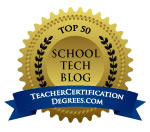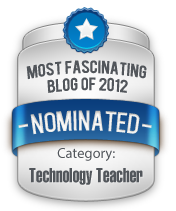This monthly IES NewsFlash provides a high-level overview of NCES publication activities for the past month and promotes upcoming NCES resources and events. For more NCES news, join our mailing list or follow us on X (formerly Twitter), Facebook, LinkedIn, and YouTube.
What’s New
Digest of Education Statistics State Dashboard (data tool)
 This dashboard provides state-level data on topics of current interest in American education. Hover over a state or other entity to see an at-a-glance profile or click to access a detailed profile. This dashboard provides state-level data on topics of current interest in American education. Hover over a state or other entity to see an at-a-glance profile or click to access a detailed profile.
Detailed profiles provide data on
- public schools (e.g., enrollment, pupil/teacher ratios, teacher salaries, graduation rates, assessment scores, expenditures);
- private schools (e.g., enrollment, numbers of schools, teachers, and graduates); and
- postsecondary institutions (e.g., enrollment, student charges).
Explore the Dashboard.
A Retrospective Look at U.S. Education: 10 new profiles (report)
 Explore 10 new profiles added to our commemorative report on the history and use of federal education statistics. Explore 10 new profiles added to our commemorative report on the history and use of federal education statistics.
Browse the profiles.
High School Longitudinal Study of 2009 (HSLS:09): A First Look at the 2021 Postsecondary Enrollment, Completion, and Financial Aid Outcomes of Fall 2009 Ninth-Graders (report)
This First Look report provides selected findings from the High School Longitudinal Study of 2009 (HSLS:09) Postsecondary Education Administrative Records Collection (PEAR). HSLS:09 follows a nationally representative sample of students who were ninth-graders in fall 2009 from high school into postsecondary education and the workforce. The PEAR data collection was conducted in 2021, approximately 8 years after high school graduation for most of the cohort. These data provide information on whether fall 2009 ninth-graders enrolled in postsecondary education by June 2021, and allow researchers to examine enrollment characteristics, degree completion, and financial aid awards for the subset of fall 2009 ninth-graders who enrolled in postsecondary education.
Read the report.
NAEP 2017 and 2019 National Mathematics Student Responses (Grades 4 and 8) Restricted-Use Data Files (data files)
This restricted-use dataset contains over 260,000 open-ended student responses to 10 constructed response items from the NAEP 2017 and 2019 grades 4 and 8 mathematics assessments. The dataset includes scored student responses and demographic information for each test item. The dataset also includes student responses to other parts of the same item in other formats (e.g., fill-in, forced choice) which provide more context about the student response. This data can be used for conducting many different types of research using natural language student responses and has high accuracy in human inter-rater reliability ratings (e.g. QWK > 0.95). Data documentation is included with the dataset, such as a variable dictionary, the original version of the questions as the student would have seen them, the scoring guide/rubric for the questions, and exemplar papers used by human scorers. Your organization must apply for and be granted a restricted-use data license in order to obtain these data.
Explore the data.
Spotlight
NCES Asian American and Pacific Islander Heritage Month with Updated Fast Fact (Fast Fact)
Celebrate Asian American and Pacific Islander (AAPI) Heritage Month by exploring data on the learning experiences of AAPI students throughout their education careers and the characteristics of AAPI teachers and faculty.
Read the Fast Fact.
New Data from NCES: School Pulse Panel February 2024 Collection (data release)
The School Pulse Panel (SPP) is a monthly data collection of vital information on public education.
The data from the February 2024 administration of the SPP examine concerns from school leaders and parents, social and emotional skills, and state assessment programs.
Key Findings from February 2024:
Concerns From School Leaders and Parents
- Eighty-five percent of public schools reported that parents/guardians have expressed concerns about bullying and/or cyberbullying during the 2023–24 school year. This estimate includes 32 percent that reported hearing this concern from “several” or “many” parents/guardians.
Social and Emotional Skills
- Eighty-five percent of public schools agreed that the culture at their school supports the development of students’ social and emotional skills in school. This estimate includes 49 percent of public schools that “strongly agree” with this statement and 36 percent that “somewhat agree.”
State Assessment Perceptions
- Leaders of public schools that participate in state-mandated testing for mathematics (96 percent) or for English language arts and literacy (96 percent for ELA) were asked about the extent to which they agreed or disagreed with statements related to the main state-mandated tests that their students will be given during the 2023–24 school year.
- Around 60 percent of these schools “somewhat agree” or “strongly agree” with the statement “I support the use of the current statewide tests to measure student mastery of state [subject] standards” (66 percent for ELA; 62 percent for Math).
- Around three-quarters of these schools “somewhat agree” or “strongly agree” with the statement “Results from state-mandated [subject] tests will provide useful data to inform classroom instruction” (75 percent for ELA; 74 percent for Math).
Explore the data.
By the Numbers

Learn more here.
Upcoming Releases
- May 2nd: High School & Beyond 2022 Base Year Web Tables
- May 7th: Revenues and Expenditures for Public Elementary and Secondary Education: School Year 2021–22 (Fiscal Year 2022)
- May 9th: School Pulse Panel March 2024 Collection
- May 30th: Condition of Education: 2024
 For more information, visit the SAP informational website or the NCES website. For more information, visit the SAP informational website or the NCES website.
|
Today, NCES released Revenues and Expenditures for Public Elementary and Secondary Education: School Year 2021–22 (Fiscal Year 2022). This first look report presents state-level data on revenues by source and expenditures by function and object for public elementary and secondary education for school year 2021–22.

 This dashboard provides state-level data on topics of current interest in American education. Hover over a state or other entity to see an at-a-glance profile or click to access a detailed profile.
This dashboard provides state-level data on topics of current interest in American education. Hover over a state or other entity to see an at-a-glance profile or click to access a detailed profile. Explore 10 new profiles added to our commemorative report on the history and use of federal education statistics.
Explore 10 new profiles added to our commemorative report on the history and use of federal education statistics.
 For more information, visit the
For more information, visit the  Today, NCES released a new dashboard that centralizes state-level data from the Digest of Education Statistics. The
Today, NCES released a new dashboard that centralizes state-level data from the Digest of Education Statistics. The 





 12 Unique Blogs Are Written By Professors
12 Unique Blogs Are Written By Professors